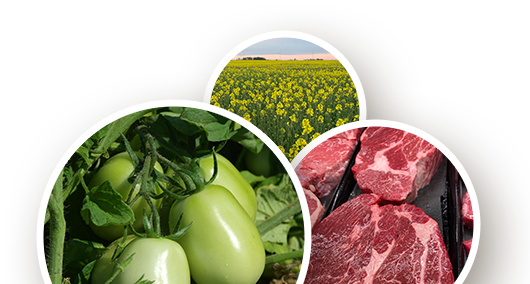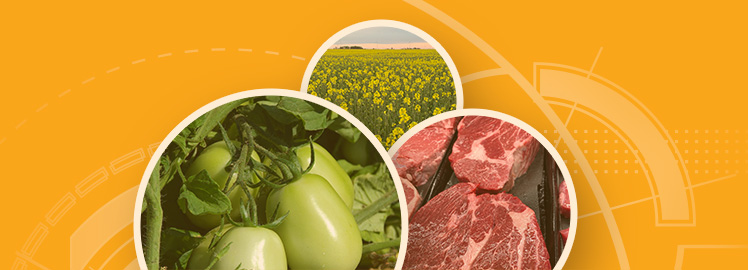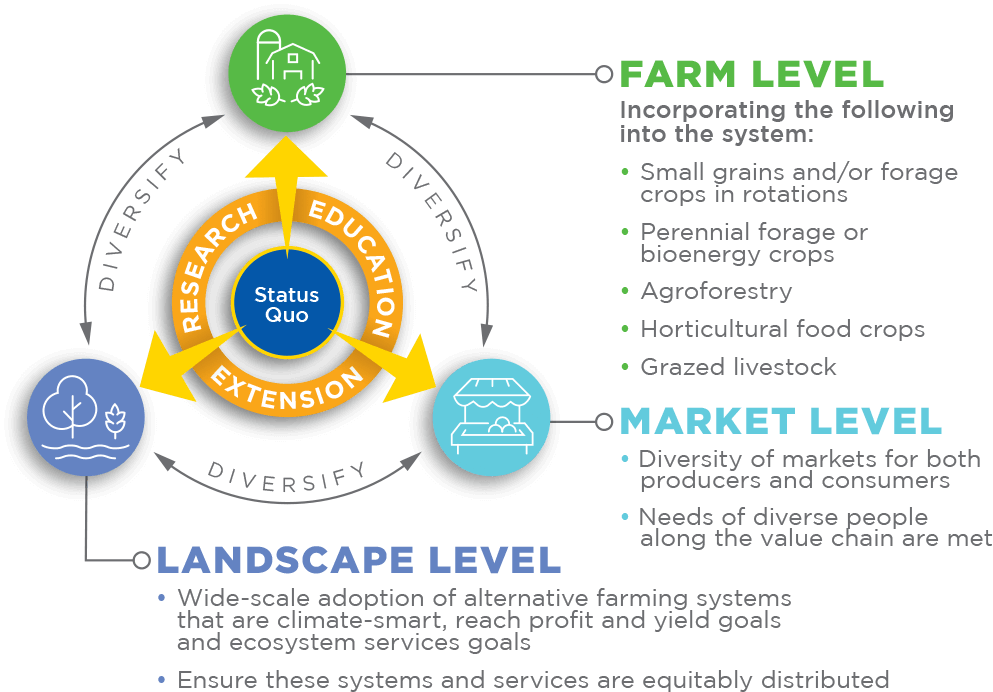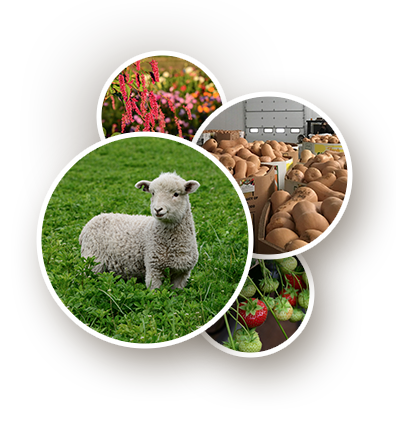DIVERSE CORN BELT
PROJECT

DIVERSE CORN BELT
PROJECT

Enhancing rural resilience through landscape diversity in the Midwest
The Diverse Corn Belt Project (#DCB) is a five-year, multi-disciplinary research project exploring opportunities beyond corn and soybeans and investigating the real-world impacts of diversified farming systems. With more than 30 research partners, we are seeking concrete options for diversification and understanding the agronomic, economic, social, infrastructure and policy changes that could make them viable.
Our hypothesis—backed by extensive data we’ve gathered during the last four years—is that greater diversity in crops, livestock, and people in the Corn Belt farming community will improve risk management options, resilience, and profitability.
RESILIENCE
For decades, farmers in America’s Corn Belt have become world-class specialists in producing millions of tons of corn and soybeans. In 2024, farmers in the DCB focus states of Indiana, Illinois, and Iowa harvested 5.9 billion bushels of corn, 1.6 billion bushels of soybeans, and 13.2 million tons of silage on 55.5 million acres.
In biological systems—and economic and social ones—resilience is rooted in diversity. DCB’s goal is to expand diversification opportunities that benefit farmers, communities, the regional economy, and the environment. The DCB Team, funded by USDA’s National Institute of Food and Agriculture, has entered the final year of an intensive five-year exploration of diversity options for the Corn Belt states of Indiana, Illinois, and Iowa.
The DCB Team explores diversity on several levels:
Farm-level diversity, including more options for crop rotations, perennial crops for forage or bioenergy, grazing livestock, agroforestry, and horticultural crops.
Market-level diversity, creating channels for processing and marketing a wider variety of agricultural products and meeting the needs of diverse people all along the value chain.
Landscape-level diversity, a wide-scale proliferation of profitable, resilient, climate-smart farming systems that achieve yield, ecosystem and equity goals.

INTERCONNECTED
A more diverse Corn Belt starts with wider options for crop rotations. More choices for crop rotation can help build soil microbial communities, improve carbon sequestration, interrupt the buildup of pests and pathogens in the soil, and broaden possible income streams.
GATHERING DATA
Over the past four years, the DCB Team has gathered data in several environments with a wide range of methods. Our innovative approaches include:
In the field: Our scientists collected water and soil samples from farms and nearby locations to explore the environmental impacts of different farming systems. Fresh research methods included analyzing in-field audio recordings to estimate insect populations and diversity and exploring how accurately farmers can use their sense of smell to assess soil health.
In the community: We conducted focus groups with farmers and one-on-one interviews with community members to understand their perspectives on agricultural diversification. Reimagining Agricultural Diversity (RAD) Teams met several times in each study state to dive deep into challenges and opportunities facing diverse agricultural systems. Participants explored attitudes toward diversity and guided some of the field and lab research.
In the marketplace: We conducted detailed surveys with food processors and retailers, who shared their insights on the motivations and barriers impacting diversification.
Projecting impacts of diversification: Our modeling team uses sophisticated software to combine field data and survey insights to predict economic and ecological outcomes from a wide range of diversification scenarios.
SHARING THE RESULTS
We want to keep our stakeholders throughout the Corn Belt engaged in the diversification conversation. As we gather data and draw conclusions, our network of Extension and education professionals share insights across the Midwest, from talks at farmer field days to this website, which is constantly growing.

STAY CONNECTED
Our hope is that DCB’s findings can help inspire policymakers to create an encouraging environment for diversification, supply chain partners to open avenues for Corn Belt-grown produce, and farmers to adopt diversification strategies for greater resilience and success.
Stay connected with DCB via our newsletter or social media channels: Facebook, LinkedIn, X, and Instagram.

